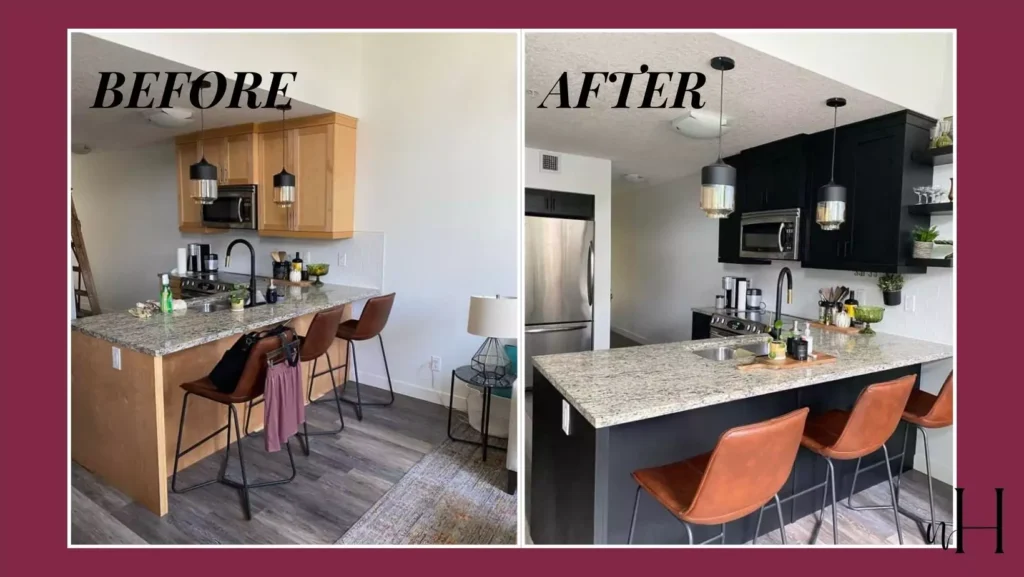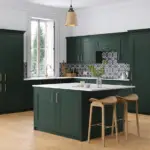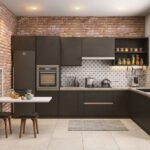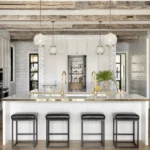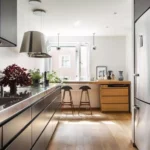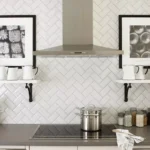Painting cabinets without sanding is possible using specially formulated paints or “paint+primer” systems. Before painting my kitchen cabinets at the lake house, i was feeling it’s impossible to paint cabinets and other furniture without sanding .But i will share best paint for kitchen cabinets without sanding.
But with trying many options,i found that its totally possible.
But before starting to paint your cabinets, you should consider filling all the scratches with wood filler for a smooth finish and look.
If you’ve read out yet 11-Best Sherwin Williams Paint for Cabinets and Trim+Side by Side Comparison I recently wrote about, then you should read this too,cuz its more detailed and with unfiltered images , i mean real home images.
You might have found this blog naturally explained cuz i can’t sum up my feelings in professional language. So I can explain everything well in my own tone.
Below are 7 top paint options (and kits) for kitchen cabinets wood, laminate that require minimal or no sanding. Each option is explained with its key features and finish type, followed by Pros and Cons.
Urethane-Modified Enamel (Sherwin-Williams Emerald Urethane)
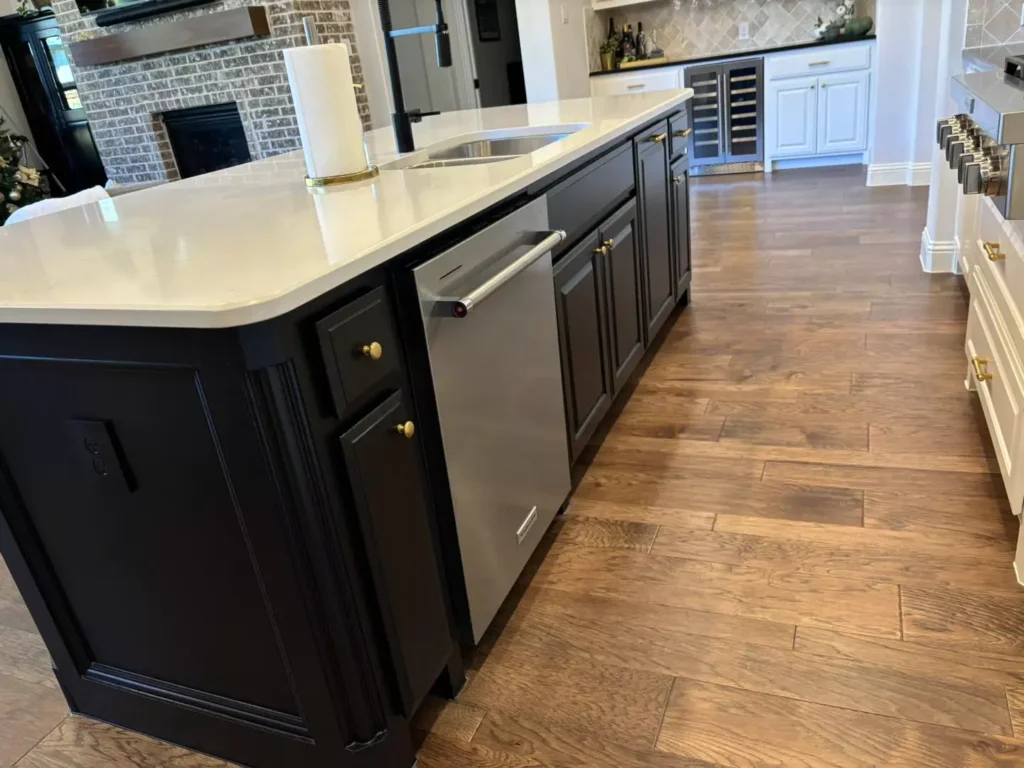
Oppsss it always makes me excited to write about Sherwin-Williams Emerald® Urethane Trim Enamel ,which is a high-end water-based urethane alkyd enamel. I painted my kitchen cabinets with this paint kind ,and WOOOAW it worked very well. I just love it, broooo. It deserves to be on number#1.
SW explicitly recommends Emerald for cabinets, noting it is “among the best paints for kitchen cabinets” due to its superior flow and leveling. It comes in gloss, semi-gloss or satin sheen.
Emerald is extremely hard and durable once cured. In practice, it is typically paired with an adhesion primer (SW’s Extreme Bond) so that no sanding is needed for clean surfaces.
Its little expensive but the money will be worth it.
Pros:
- Exceptionally smooth, durable finish with excellent leveling.
- Available in multiple sheens (gloss to satin) for high-quality cabinetry looks.
- Water cleanup (oil-like performance without solvents).
- Formulated to resist chipping and provide a long-lasting coat.
Cons:
- Primer strongly recommended. Sherwin advises using Extreme Bond primer to ensure adhesion (on truly clean surfaces, sanding can be skipped).
- Very long full-cure time (hardens over weeks).
- Premium price point.
- Must allow long dry times (24–48 hrs between coats as SW suggests).
- Glossy sheens will show any remaining flaws if prep was inadequate.
Chalk Paint (Matte Finish)
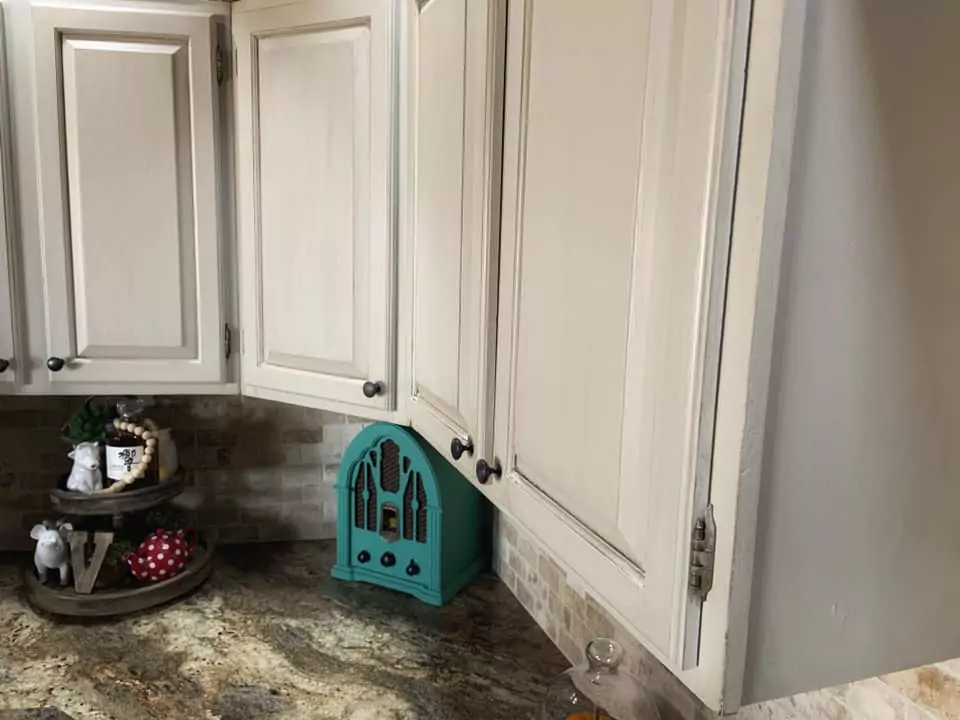
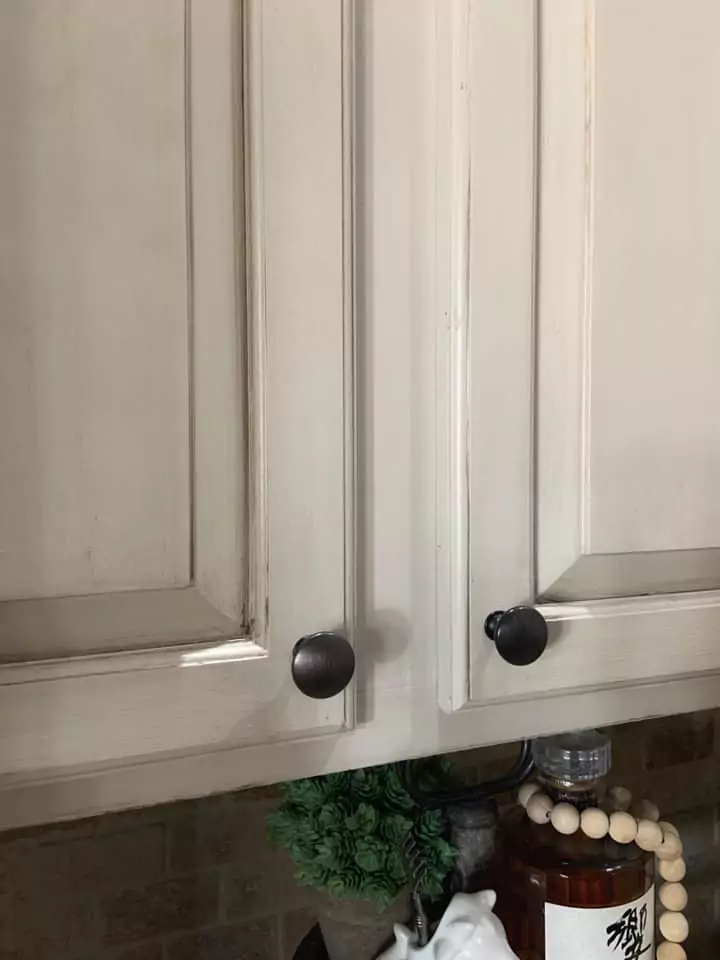
Chalk paints (e.g. Annie Sloan Chalk Paint or similar) are very popular for DIY cabinet makeovers because they adhere to most clean surfaces without sanding or priming.Hahahha, this paint, everyone who loves diy their projects must have used it .Cuz its the first ever paint on furniture we all tried. As i tried this back in 2019.
Its not that good option if the adhesion is not beautifully mixed in it. With roller, you can have a little buffing finish, but for a smooth finish, use a brush.
They are flat, mineral-based paints with a soft, matte appearance. After applying chalk paint, you must seal it (typically with wax or poly) to protect the finish. Chalk paint covers quickly in few coats and dries fast, making it convenient for non-professionals.
Pros:
- No sanding or primer needed – the special formula “will stick to almost all surfaces without sanding or priming”.
- Thick, high-coverage consistency means fewer coats are required.
- Dries quickly (enabling faster recoats).
- Great at hiding wood grain and tannins (especially on oak).
Cons:
- Very thick formula can show brush strokes or heavy texture.
- Typically only available in flat/matte sheen (so not glossy).
- Must be sealed to protect durability – chalk finish is easily scuffed without a clear coat.
- Limited custom colors (Annie Sloan’s chalk paint has fixed palette).
- Can require more coats on areas with bare wood that bleed tannins (primer might cover these more efficiently).
Epoxy Cabinet Coating Kit (Rust-Oleum Cabinet Transformations)
Rust-Oleum’s Cabinet Transformations kit is a 3-step epoxy coating system (included degreaser, bonding primer, and topcoat) made for laminate, wood or metal cabinets.
Importantly, it’s designed to require no sanding or priming. You simply clean the cabinets (it even supplies a Krud Kutter degreaser), apply the bond coat, and then the special topcoat.
The result is a smooth satin enamel finish. This system stands up to kitchen abuse – Rust-Oleum claims “superior stain and scratch resistance” and full use of cabinets in 24 hours.
Pros:
- No sanding or priming needed – guaranteed by the kit’s chemistry.
- Works on wood, laminate, melamine or metal surfaces.
- Provides a durable satin-finish epoxy coating with stain/scratch resistance.
- Includes cleaner/degreaser and topcoat; ready-for-use in 24h.
- One-visit makeover: prep + bond coat + topcoat, all within a day.
Cons:
- High cost (kits are expensive and cover ~100 sq ft; many kitchens need multiple kits).
- Limited color range (light “white tint” or deep tint; custom colors require mixing).
- Fumes are strong (epoxy smells) – good ventilation required.
- Application is technique-sensitive (must apply exactly in order and timing).
- Finish is satin only (no gloss option) and can yellow slightly over time in bright light.
Milk Paint with Bonding Agent (Satin/Matte Finish)
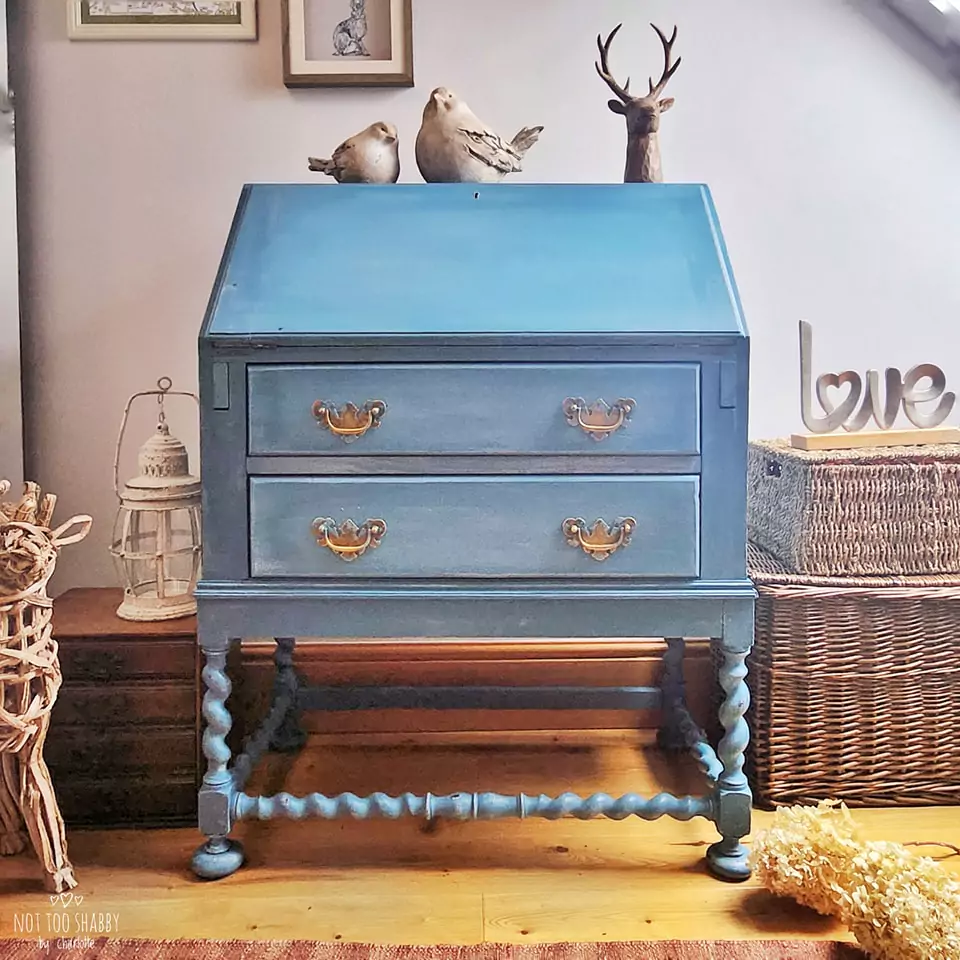
Mineral-based milk paints (like General Finishes Water-Based Milk Paint) can be used on cabinets without sanding if a bonding agent is added. These paints are eco‑friendly, low-VOC, and formulated to be very durable on furniture and cabinets.
General Finishes milk paint is noted as “premium” and “so durable, it is a go-to finish for cabinets and furniture”. It is self‑sealing (needs no separate topcoat on darker colors).
For best adhesion on slick or laminate surfaces, apply a high-quality bonding primer first or use the manufacturer’s bonding additive.
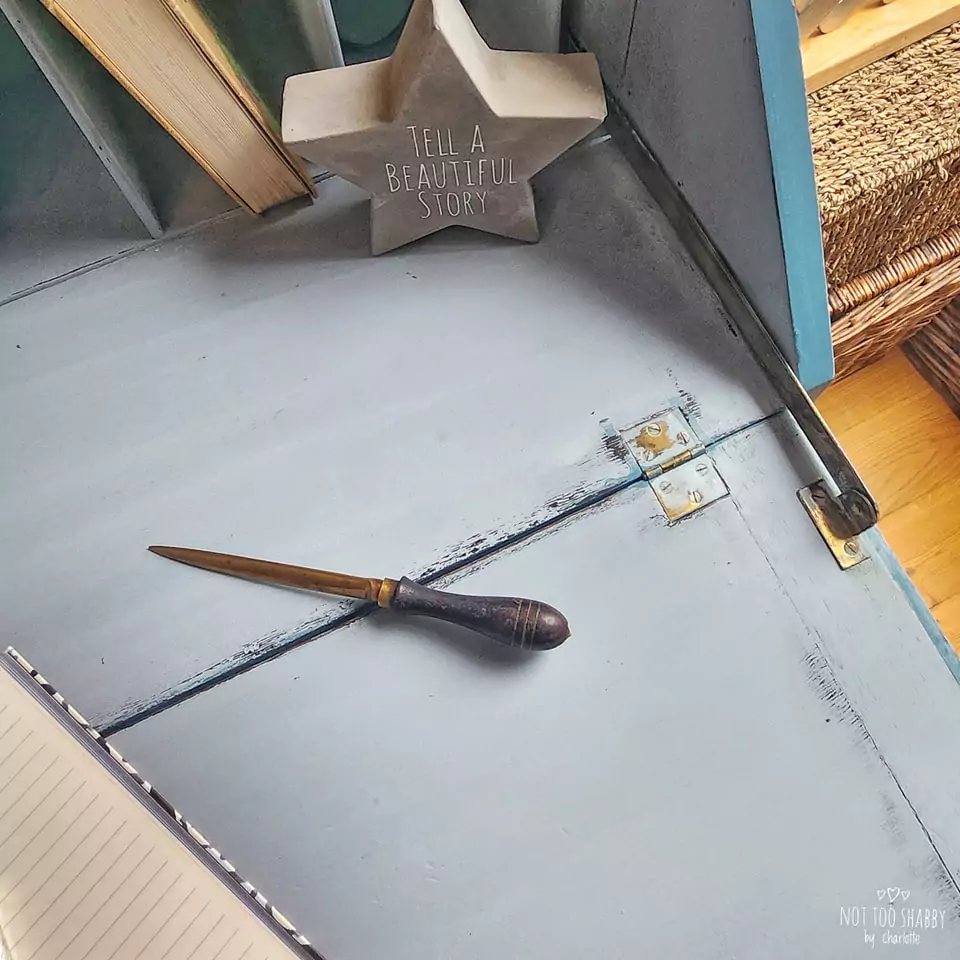
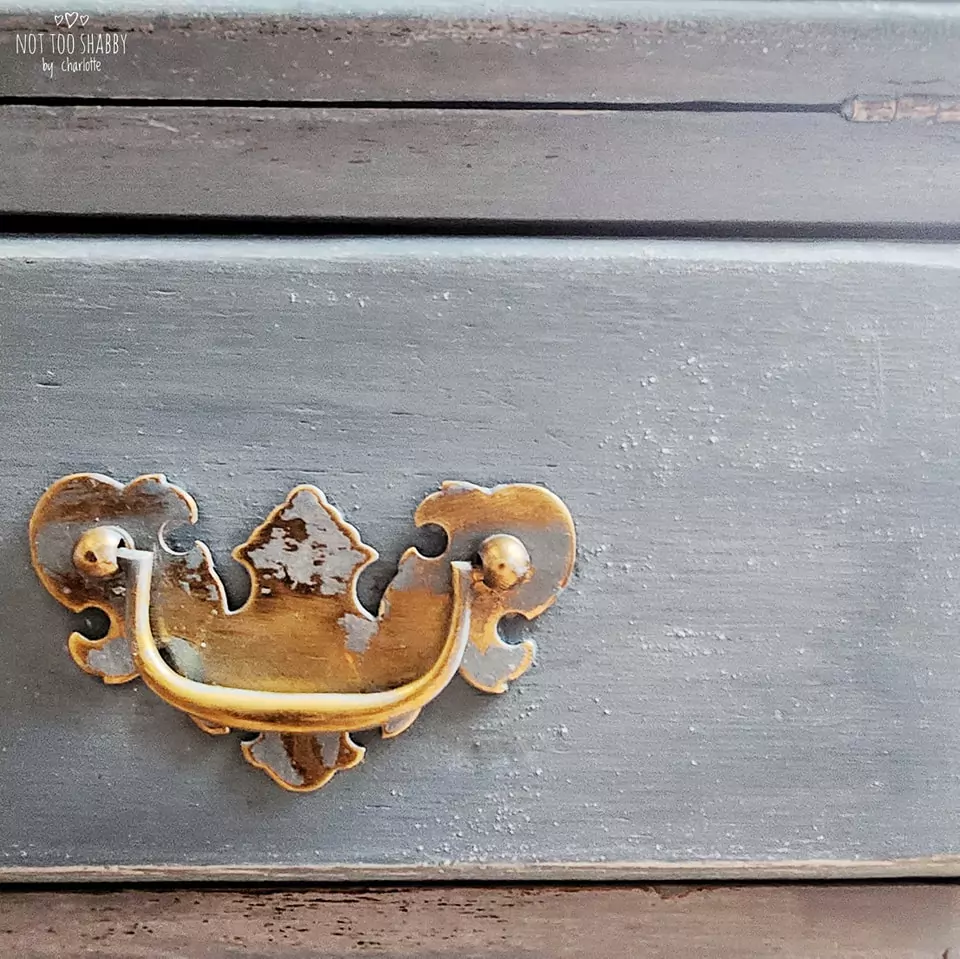
Pros:
- Self-priming and self-sealing – no separate topcoat needed on most colors.
- Very durable, water-based mineral formula designed for cabinetry.
- Low odor and low VOC (often made from renewable ingredients).
- Can be applied with brush, roller or sprayer.
Cons:
- Requires mixing with bonding agent (extra step) on slick or previously painted surfaces.
- Limited color selection compared to large latex lines.
- Matte/satin finish – you may want to add a protective gloss poly for high-traffic kitchens (light colors should not have clearcoat directly).
- Some substrates (e.g. laminate, MDF) may still require a primer undercoat for best adhesion.
Waterborne Alkyd Enamel (e.g. Benjamin Moore Advance)
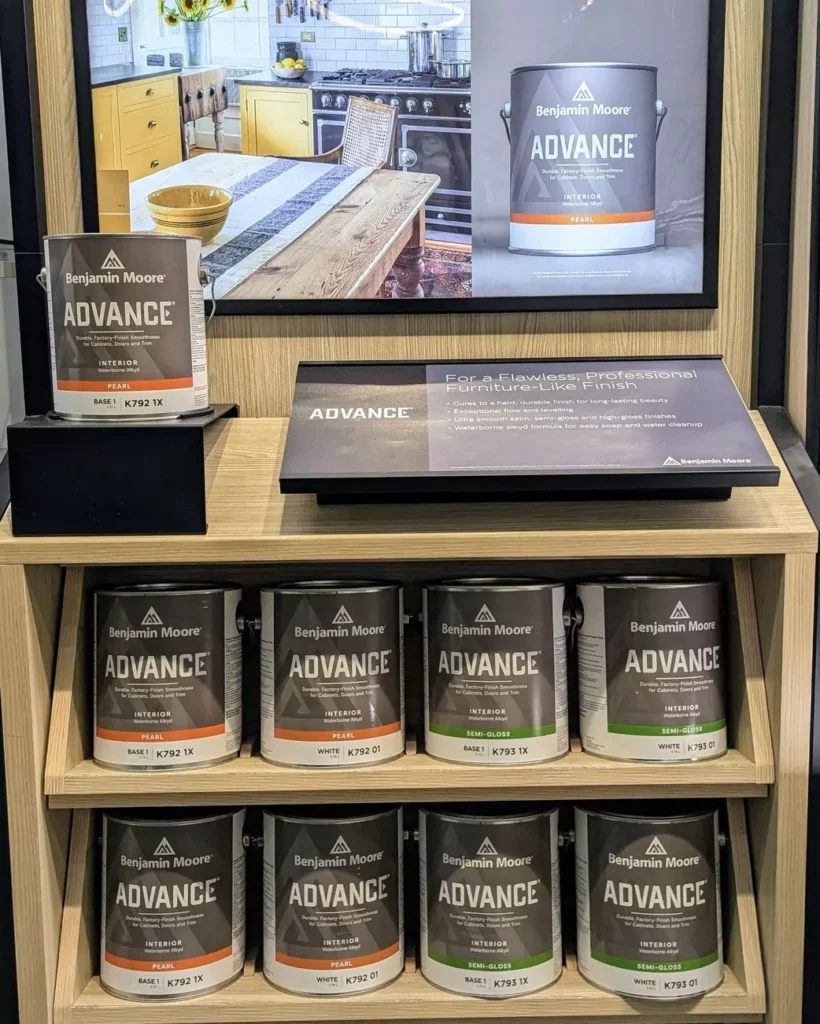
Benjamin Moore® Advance is a waterborne alkyd enamel designed as a cabinet/trim paint. It combines the toughness of an oil-based alkyd with easier water cleanup.
Advance is highly self-leveling and resistant to chipping. Unlike latex, it “fully cure[s] in approximately five days”, so doors can be handled (opened/closed) without marks within a week or so.
Users praise Advance for its excellent adhesion and durable finish: it often requires no heavy sanding beforehand. The finish can be glossy, semi-gloss or satin.
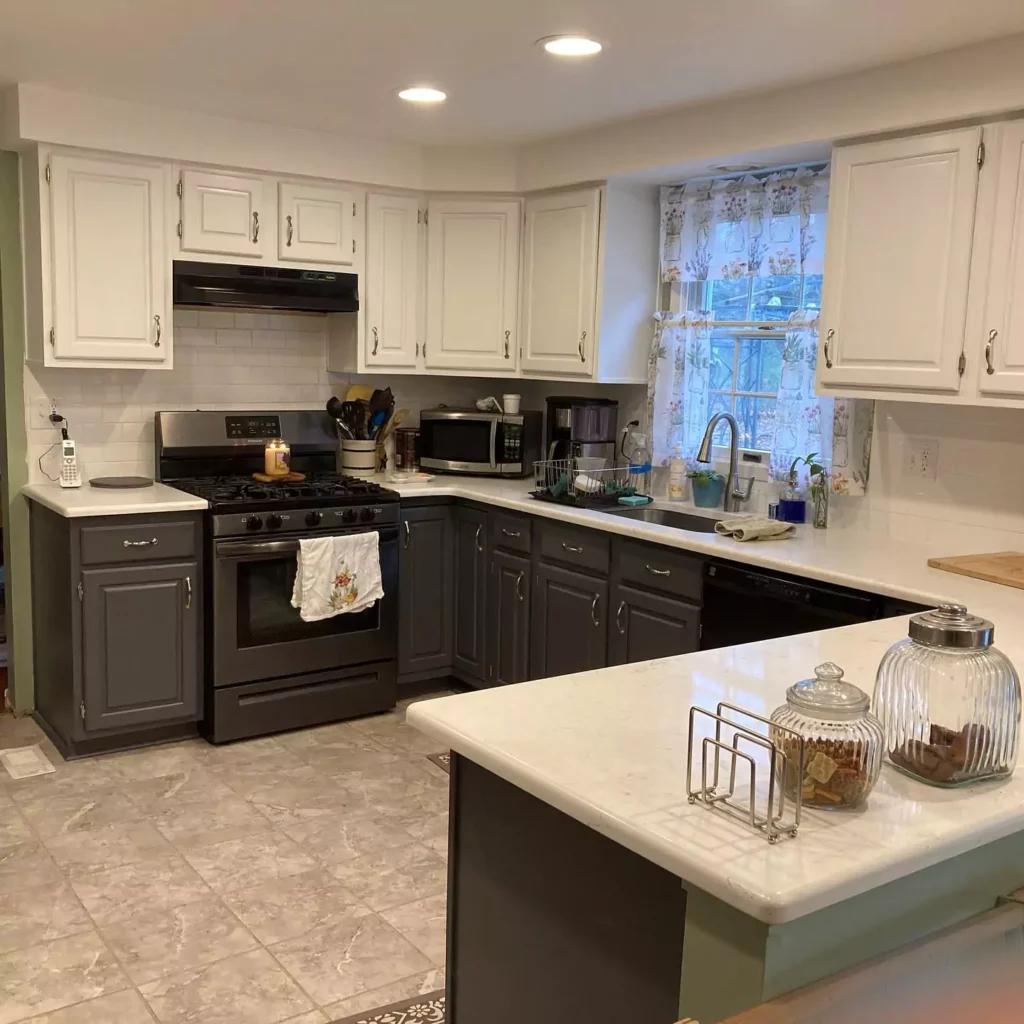
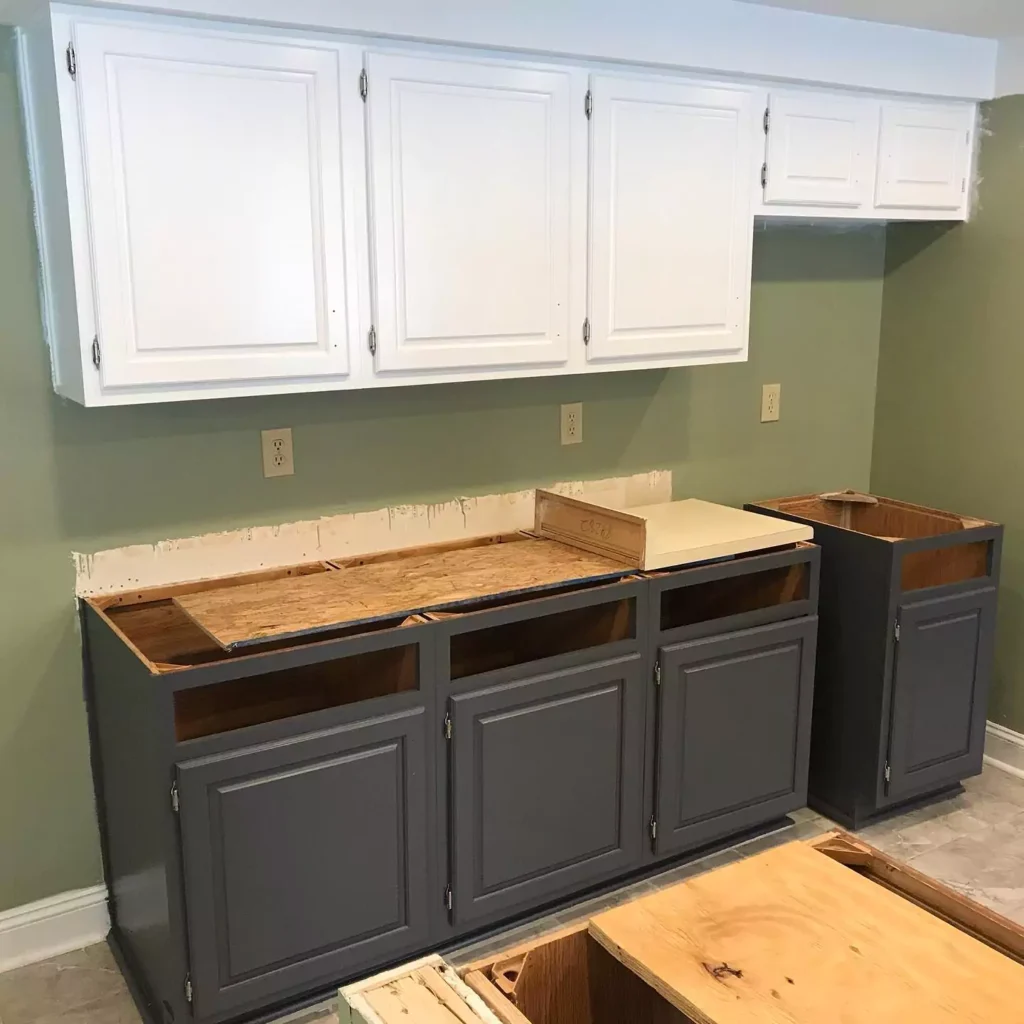
Pros:
- Premium waterborne alkyd formulation gives an “oil-like” smooth finish with strong adhesion.
- Fast cure (≈5 days) compared to latex paints.
- Self-leveling (minimizes brush or roller marks) and very hard when cured.
- Resists yellowing better than traditional oil enamels (waterborne colorant system).
Cons:
- Surface prep still important: a clean, dull (scuff sanded) surface is recommended.
- Slower touch-dry time (must wait 6–8 hrs between coats).
- More expensive than basic latex paints.
- May require careful thinning or sprayer setup for best application.
“All-in-One” Cabinet Enamel (Heirloom Traditions)
Heirloom Traditions All-In-One® is a popular one-step acrylic cabinet paint (paint + primer + clear), marketed as requiring no sanding, priming, or topcoat.
It comes in many colors (and satin sheen) and is designed for DIY use on cabinets, furniture, doors, etc. The formula is a durable acrylic enamel – many users find it yields a factory-quality finish with minimal prep.
Pros:
- True all-in-one formula: built-in primer and sealer, so you can apply directly to a clean surface. No separate primer or varnish needed.
- Wide color selection (44+ colors available) and low-VOC.
- Designed for beginners: user-friendly, with many online tutorials.
- Durable finish (many report no peeling or chipping even after heavy use).
Cons:
- Less known brand; only sold online or specialty stores (not at big home centers).
- Finish is acrylic; harder than chalk paint but not quite as tough as epoxy.
- Each color must be purchased separately (no mixing on demand).
- May require multiple coats for full coverage on dark woods.
High-Quality Acrylic/Alkyd Enamel Paints (with Primer)
Aside from specialty products, you can use premium cabinet enamel (waterborne or oil-modified) together with a bonding primer.
In other words, a top-notch acrylic or alkyd latex cabinet paint (such as Valspar Cabinet & Furniture Enamel, Sherwin ProClassic, etc.) paired with a quality primer can yield excellent results. Ive used it but all i can say im not that much found of this paint.Sorrrryyyy .
Many pros recommend alkyd or enamel formulas for durability. These paints come in gloss, semi-gloss or satin finishes.
Pros:
- Very durable finish – alkyd-based enamels and high-quality acrylics are designed for wear.
- Widely available (Benjamin Moore, Sherwin-Williams, Behr, Valspar, etc.), with extensive color & sheen choices.
- Often affordable compared to specialty kits.
- Easy cleanup if waterborne; oil-based versions offer extreme hardness (but require solvents).
Cons:
- Usually require primer and/or sanding for best adhesion (it’s not truly no-sand unless a bonding primer is used).
- Shiny sheens (satin/gloss) highlight surface imperfections and brushing flaws.
- Oil-based versions have strong fumes and yellow over time; waterborne ones can be less hard.
- Generally more prep work than “self-priming” options above.
Frequently Asked Questions
Can I paint over kitchen cabinets without sanding?
Yes – if you thoroughly clean and use the right products. For example, Sherwin-Williams notes that with a high-adhesion primer (Extreme Bond) “sanding may not be necessary for most clean, paintable surfaces”.
In practice, experts often use a liquid deglosser or bonding primer to skip sanding. (However, rough sanding or Scotch-Brite scuffing is still recommended on slick finishes for maximum adhesion.)
What kind of paint is most durable for kitchen cabinets?
The most durable cabinet paints are alkyd-based enamels or high-end acrylic latex enamels. These coatings cure to a very hard finish and resist chipping.
In particular, professional-grade waterborne alkyds (like Benjamin Moore Advance) and urethane-modified enamels (like SW Emerald) are popular for longevity. Epoxy-based systems (e.g. Rust-Oleum kits) are even tougher, but require specialized application.
What Sherwin Williams paint is best for cabinets?
Sherwin-Williams’ own recommendation for cabinets is Emerald® Urethane Trim Enamel (available in gloss, semi-gloss or satin).
SW’s project guide specifically calls Emerald “among the best paint for kitchen cabinets” due to its smooth, durable finish. (Another SW option is ProClassic® interior acrylic enamel, but Emerald is the flagship cabinet/trim enamel.)
What I wish I knew before painting cabinets?
Prep is critical. First, remove all doors and hardware (hinges, handles) so you can work on a flat surface. Then clean thoroughly with a degreaser (kitchens are greasy).
Even if you skip sanding, a good bonding primer or deglosser is advised. Use high-quality brushes/rollers or a sprayer, and apply several thin coats rather than one heavy coat.
Finally, be patient: allow each coat to dry fully (Sherwin suggests 24–48 hours between coats)sherwin-williams.com to avoid smudges or peeling. These steps, while time-consuming, ensure a professional result.
Should kitchen cabinets be semi-gloss or satin?
Both are common, and the choice is stylistic. Semi-gloss is very durable and easy to clean (great for food splatters) and resists sun-fade, but it has a sharper shine that highlights imperfections.
Satin (a lower sheen) still cleans well and is also durable, but gives a softer “velvety” look that hides minor flaws better. Many designers prefer satin for a modern muted look, while classic kitchens often use semi-gloss for extra brightness. In either case, avoid matte or flat on high-use cabinets.
What paint does Joanna Gaines use for kitchen cabinets?
Joanna Gaines has her own cabinet paint line: “Magnolia Home by Joanna Gaines Cabinet Paint” (made in partnership with KILZ). It’s a water-based acrylic enamel formulated for kitchen and bath cabinets.
This paint is advertised as having the hardness of an oil-based paint (but cleans up with soap and water). Gaines often uses shades from her Magnolia palette in a semi-gloss or satin finish.
Is Benjamin Moore Advance better than Sherwin Williams Emerald Urethane?
Both are top-of-the-line cabinet paints, but they have different strengths. Benjamin Moore Advance is a waterborne alkyd that self-levels extremely well and cures relatively quickly (about 5 days to full cure)benjaminmoore.com.
Sherwin Emerald Urethane is a water-based urethane-alkyd hybrid that is famously hard and durablesherwin-williams.com, though its full cure can take longer (some sources say up to 30 days).
Advance cleans up with water and resists yellowing; Emerald is marketed as “best-in-class” durabilitysherwin-williams.com. In practice, most pros say either produces excellent results. Choice often comes down to availability, ease of use, or personal preference.
Does Sherwin Williams Emerald Urethane need a topcoat?
No – Emerald Urethane is itself a finish coat. Sherwin’s literature implies you can use it alone on cabinets (with primer beneath), and others report that no additional lacquer is required.
Some users note that once Emerald has fully cured, you can brush on a clear polyurethane if extra protection or gloss is desired, but it’s generally not necessary for kitchen cabinet applications.

